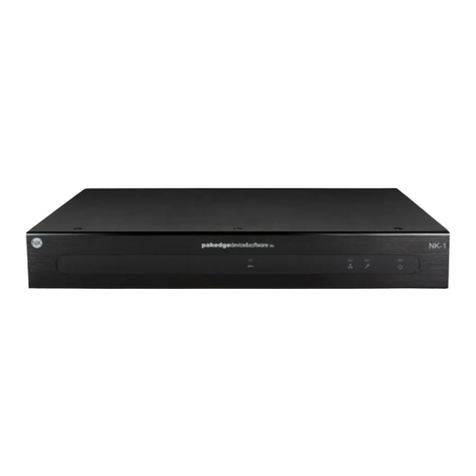
NK-1 Wireless Controller User Guide
Contents
Introduction....................................................................................................................................................................................... 2
Customer Service and Technical Support...................................................................................................... 2
Contents ............................................................................................................................................................................................. 3
Overview.............................................................................................................................................................................................4
Preparing to install the controller ..........................................................................................................................................4
Installation..........................................................................................................................................................................................4
Configuring the NK-1 through your network router............................................................................................. 5
Configuring the NK-1 directly using a computer.................................................................................................... 5
Running the wizard ....................................................................................................................................................................... 7
NK-1 Home screen..........................................................................................................................................................................9
Managing the network............................................................................................................................................................... 10
Using the Wireless Controller application ....................................................................................................................... 10
Using the Wireless Controller Dashboard .................................................................................................................11
Using AP status widgets .........................................................................................................................................11
Using the Client(s) view..........................................................................................................................................12
Setting up WiFi.......................................................................................................................................................................12
Setting up WiFi for access points......................................................................................................................12
Viewing AP group configurations .....................................................................................................................15
Creating a new AP group configuration ........................................................................................................16
Changing NK-1 system settings .....................................................................................................................................18
Changing login credentials....................................................................................................................................18
Performing NK-1 maintenance.............................................................................................................................19
Updating system firmware....................................................................................................................................19
Viewing and updating license information ................................................................................................. 20
Updating AP firmware........................................................................................................................................... 20
Using advanced WiFi settings........................................................................................................................................21
Planning AP deployment........................................................................................................................................21
Scheduling WiFi availability.................................................................................................................................23
Setting up MAC filtering ....................................................................................................................................... 24
Running a site survey............................................................................................................................................. 24
Changing administration settings....................................................................................................................................... 26
Changing NK-1 system settings ................................................................................................................................... 26
Updating system firmware..............................................................................................................................................27




























